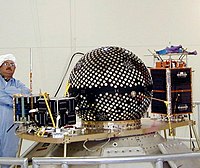
The Meteor spacecraft are weather observation satellites launched by the Soviet Union and Russia since the Cold War. The Meteor satellite series was initially developed during the 1960s. The Meteor satellites were designed to monitor atmospheric and sea-surface temperatures, humidity, radiation, sea ice conditions, snow-cover, and clouds. Between 1964 and 1969, a total of eleven Soviet Union Meteor satellites were launched.
HAMSAT, also known as HAMSAT INDIA, VU2SAT and VO-52, is a microsatellite weighing 42.5 kilograms (93.7 lb), providing amateur radio satellite communications services for Indian and international amateur radio operators. This satellite carries the in-orbit designation of VO-52, and is an OSCAR series satellite.
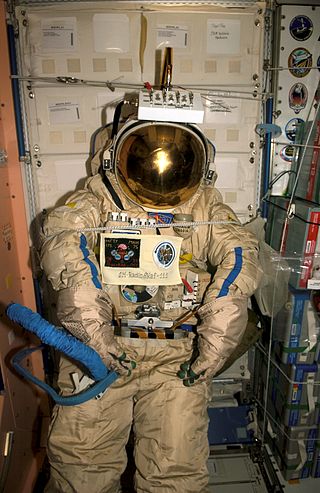
SuitSat was a retired Russian Orlan space suit with a radio transmitter mounted on its helmet, used as a hand-launched satellite.
Saudi-OSCAR 50 is a Saudi Arabian amateur radio satellite that was launched on 20 December 2002 by the King Abdulaziz City for Science and Technology.
An amateur radio satellite is an artificial satellite built and used by amateur radio operators. It forms part of the Amateur-satellite service. These satellites use amateur radio frequency allocations to facilitate communication between amateur radio stations.

ESTCube-1 is the first Estonian satellite and first satellite in the world to attempt to use an electric solar wind sail (E-sail). It was launched on 7 May, 2013, aboard Vega VV02 carrier rocket and successfully deployed into the orbit. The CubeSat standard for nanosatellites was followed during the engineering of ESTCube-1, resulting in a 10×10×11.35 cm cube, with a volume of 1 liter and a mass of 1.048 kg.
Australis-OSCAR 5 is an amateur radio satellite that was launched into Low Earth Orbit on 23 January 1970 by a Thor Delta launcher from Vandenberg Air Force Base, Lompoc, California. AO-5 was launched piggyback with TIROS-M (ITOS-1) weather satellite).

OSCAR 3 is the third amateur radio satellite launched by Project OSCAR into Low Earth Orbit. OSCAR 3 was launched March 9, 1965 by a Thor-DM21 Agena D launcher from Vandenberg Air Force Base, Lompoc, California. The satellite, massing 15 kg (33 lb), was launched piggyback with seven United States Air Force satellites. Though the satellite's active life was limited to sixteen days due to battery failure, OSCAR 3 relayed 176 messages from 98 stations in North America and Europe during its 274 orbit life-time -- the first amateur satellite to relay signals from Earth. As of 2025, it is still in orbit.

OSCAR IV was the fourth amateur radio satellite launched by Project OSCAR and the first targeted for Geostationary orbit on 12 December 1965. The satellite was launched piggyback with three United States Air Force satellites on a Titan IIIC launch vehicle. Due to a booster failure, OSCAR 4 was placed in an unplanned and largely unusable Geostationary transfer orbit.

FUNcube-1 is a complete educational single unit CubeSat satellite with the goal of enthusing and educating young people about radio, space, physics and electronics. It is part of a program which aims to launch more of these educational CubeSats. It is the first satellite with outreach as its primary mission.

OSCAR 1 is the first amateur radio satellite launched by Project OSCAR into low Earth orbit. OSCAR I was launched December 12, 1961, by a Thor-DM21 Agena B launcher from Vandenberg Air Force Base, Lompoc, California. The satellite, a rectangular box weighing 10 kg., was launched as a secondary payload (ballast) for Corona 9029, also known as Discoverer 36, the eighth and final launch of a KH-3 satellite.
NOAA-11, known as NOAA-H before launch, was an American weather satellite operated by the National Oceanic and Atmospheric Administration (NOAA) for use in the National Operational Environmental Satellite System (NOESS) and for support of the Global Atmospheric Research Program (GARP) during 1978–1984. It was the fourth of the Advanced TIROS-N series of satellites. The satellite design provided an economical and stable Sun-synchronous platform for advanced operational instruments to measure the atmosphere of Earth, its surface and cloud cover, and the near-space environment.
NOAA-12, also known as NOAA-D before launch, was an American weather satellite operated by National Oceanic and Atmospheric Administration (NOAA), an operational meteorological satellite for use in the National Environmental Satellite, Data, and Information Service (NESDIS). The satellite design provided an economical and stable Sun-synchronous platform for advanced operational instruments to measure the atmosphere of Earth, its surface and cloud cover, and the near-space environment.
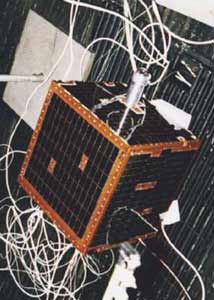
SEDSAT-1 is a U.S. amateur radio satellite built by students and developed at the University of Alabama in Huntsville (UAH).
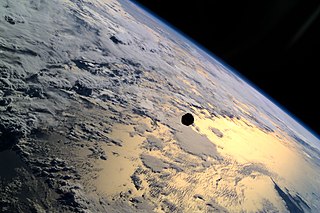
PANSAT was an amateur radio satellite. It was launched by Space Shuttle Discovery during the STS-95 mission as part of the third International Extreme Ultraviolet Hitchhiker (IEH-3) mission, on 30 October 1998 from Kennedy Space Center, Florida.
Orbiting Picosat Automatic Launcher is an American technology testing and amateur radio satellite that was developed by students at the Space Systems Development Laboratory at Stanford University in Palo Alto, California. The aim was to test the feasibility of launching several picosatellites from one parent satellite. The satellite's secondary payloads are an accelerometer testbed and a magnetometer testbed, which will perform component characterization. The main satellite ejected 6 nanosatellites in orbit. The development started in 1995 and was completed in May 1999.

Starshine 3 is one of five satellites in the Starshine project.
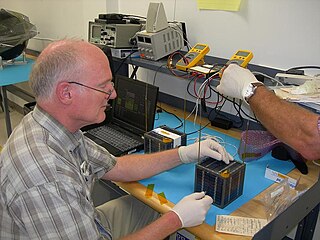
Radar Fence Transponder was an amateur radio satellite that was developed and built for training purposes at the United States Naval Academy. The 3 kg (6.6 lb) heavy RAFT had a cubic structure of 12.7 cm (5.0 in) edge length and therefore did not meet the Cubesat standard. Solar cells on all six sides of the satellite were used to supply energy. It had neither position control nor drive systems.

SpaceX CRS-23, also known as SpX-23, was a Commercial Resupply Service mission to the International Space Station, successfully launched on 29 August 2021 and docking the following day. The mission was contracted by NASA and was flown by SpaceX using the Cargo Dragon C208. This was the third flight for SpaceX under NASA's CRS Phase 2 contract awarded in January 2016. It was the second mission for this reusable capsule.
